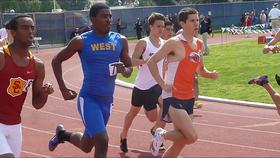- The purpose of Clark State Community College is to foster individual and community prosperity through access to the highest quality, learner-centered education.
School Highlights
Clark State College serves 6,785 students (19% of students are full-time).
The college's student-teacher ratio of 21:1 is lower than the state community college average of 22:1.
Minority enrollment is 28% of the student body (majority Black), which is less than the state average of 38%.
Quick Facts (2026)
- Enrollment: 6,785 students
- In-state tuition: $3,359
- Out-state tuition: $6,271
- Student-teacher ratio: 21:1
- Minority enrollment: 28%
- Source: Integrated Postsecondary Education Data System (IPEDS)
Top Rankings
Clark State College ranks among the top 20% of public schools in Ohio for:
School Overview
The teacher population of 326 teachers has stayed relatively flat over five years.
Clark State College
(OH) Community College Avg.
Carnegie Classification
Associate's Colleges: High Career & Technical-High Nontraditional
Baccalaureate/Associate's Colleges: Mixed Baccalaureate/Associate's
Institution Level
Four or more years
At least 2 but less than 4 years
Institution Control
Public
Private not-for-profit
Total Faculty
326 staff
93 staff
School Calendar
Student Body
The student population of Clark State College has grown by 25% over five years.
The student-teacher ratio of 21:1 has decreased from 31:1 over five years.
The Clark State College diversity score of 0.46 is less than the state average of 0.58. The school's diversity has grown by 39% over five years.
Total Enrollment
6,785 students
757 students
Student-Teacher Ratio
21:1
22:1
# Full-Time Students
1,257 students
397 students
# Part-Time Students
5,528 students
360 students
# Enrollment Undergraduate
678 students
313 students
# Full-Time Undergraduate Students
1,257 students
385 students
# Full-Time Graduate Students
n/a
10 students
# Part-Time Undergraduate Students
5,528 students
434 students
# Part-Time Graduate Students
n/a
3 students
Total Dormitory Capacity
n/a
425 students
% American Indian/Alaskan
n/a
n/a
% Asian
1%
4%
% Hispanic
4%
6%
% Black
14%
15%
% White
72%
62%
% Hawaiian
n/a
2%
% Two or more races
5%
4%
% Non Resident races
1%
1%
% Unknown races
2%
6%
Diversity Score
0.46
0.58
College Completion Rate (Students who graduate in less than 4 years)
22%
26.37%
College Completion Rate (Students who graduate in 4 years or more than 4 years)
32%
22%
Average Graduate Earnings (10 Years)
$29,500
$31,900
Tuition and Acceptance Rate
The public in-state tuition of $3,359 is less than the state average of $5,163. The in-state tuition has declined by 16% over four years.
The public out-state tuition of $6,271 is less than the state average of $10,843. The out-state tuition has declined by 14% over four years.
In-State Tuition Fees
$3,359
$5,163
Out-State Tuition Fees
$6,271
$10,843
Tuition Notes
$180.33 per credit hour for Ohio residents, $332.66 per credit hour for out-of-state residents.
% Students Receiving Some Financial Aid
84%
88%
Median Debt for Graduates
$15,104
$18,500
Median Debt for Dropouts
$5,500
$6,500
Acceptance Rate
n/a
73%
SAT Reading
n/a
460
SAT Math
n/a
475
SAT Writing
n/a
465
ACT Composite
n/a
21
ACT English
n/a
20
ACT Math
n/a
20
Source: 2024 (or latest year available) Integrated Postsecondary Education Data System (IPEDS) , School Administrators
School Notes
- Clark State Community College is a public, comprehensive, two-year higher education institution located in Springfield, Ohio. We offer both full-time and part-time employment on our beautiful Leffel Lane and Downtown campuses. Clark State Community College began in 1962 as the Springfield and Clark County Technical Education Program in an effort to meet the post-secondary, technical education needs of Springfield and the surrounding area. In 1966 the name was changed to Clark County Technical Institute (CCTI) and was chartered by the Ohio Board of Regents as Ohio's first technical college. In 1972, ten years after its birth, CCTI had grown to 1,000 students and officially became Clark Technical College. New programs in agriculture, business, engineering technologies, health, public services and general studies were developed in response to the community's changing educational and economic needs. By 1985 Clark Technical College had developed one of the broadest general education programs of any technical college in the state. On July 1, 1988, the Ohio Board of Regents approved the change of Clark Technical College to Clark State Community College. As a result of this action, Clark State added the Associate of Arts and Associate of Science degrees (university parallel programs) to the nearly 30 technical associate degrees and certificates it had offered for years. Clark State Community College offers over 50 career-oriented associate degrees and certificates in business, health, human services and engineering technologies, as well as pre-baccalaureate transfer degrees. Clark State Community College is accredited by The Higher Learning Commission: A Commission of the North Central Association of College and Schools.
Frequently Asked Questions
How much does Clark State College cost?
Clark State College's tuition is approximately $3,359 for In-State students and $6,271 for Out-State students.
What is Clark State College's ranking?
Clark State College ranks among the top 20% of community college in Ohio for: Least expensive tuition and Largest student body.
Recent Articles

Part-Time vs. Full-Time Enrollment in 2025: Which Is Better?
Explore part-time vs. full-time enrollment in 2025, comparing costs, flexibility, outcomes, and goals to help students choose the right path.

How Community Colleges Use AI Tools to Support Student Success
Explore how community colleges are using AI tools in 2025 to improve advising, learning, retention, and student success.

Nontraditional Student’s Guide to Community College 2025
Comprehensive guide for nontraditional students at community college with updated tuition, support, careers, and success strategies for 2025.










